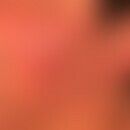Synonym(s)
Abdominal wall moid; Aggressive fibromatosis; Demoid tumor; Desmoide; Desmoid fibromatoses; desmoid fibromatosis
DefinitionThis section has been translated automatically.
Rare monoclonal, fibro-myoblastic differentiated tumours (also aggressive fibromatoses), which, starting from muscular aponeurosis, usually grow in an abdominal location, locally infiltrating but not metastasising. They have been classified as (deep) fibromatoses and often occur after banal traumas or after operations in scars. Recently they have been classified as a low-malignant form of fibrosarcoma . In children, the desmoids probably correspond to the infantile desmoid-like fibromatosis.
ClassificationThis section has been translated automatically.
One distinguishes sporadically occurring desmoids from genetically induced desmoids.
- Extra-abdominal desmoids (60% of cases)
- Abdominal desmoids (25% of cases)
- intra-abdominal desmoids (15% of cases) in familial adenomatous polyposis or Gardner syndrome
You might also be interested in
Occurrence/EpidemiologyThis section has been translated automatically.
Incidence: 2-5/100,000 inhabitants/year.
ManifestationThis section has been translated automatically.
Especially young women, especially after pregnancy or abdominal surgery. Women are 5 times more frequently affected than men.
LocalizationThis section has been translated automatically.
M. rectus abdominis (so-called abdominal desmoid tumor), more rarely shoulder and other muscles (so-called extraabdominal desmoid tumor). Also intra-abdominal occurrence: pelvis, mesentery, retroperitoneum (e.g. in the context of Gardner syndrome I).
ClinicThis section has been translated automatically.
Rough, plaque-like, planar, subcutaneous, mostly indolent, slowly growing, solitary tumor. Usually in the immediate vicinity of a surgical scar. Surface may be reddened or hyperpigmented. The diameter can be up to 20 cm.
HistologyThis section has been translated automatically.
Tumor originating from muscular aponeurosis and consisting of fibroblasts and collagenous connective tissue; no cell atypia, few mitoses. Infiltration of the underlying muscle: inclusion of isolated and degenerated muscle fibres in the tumour tissue.
Direct ImmunofluorescenceThis section has been translated automatically.
1/3 of the tumours show oestrogen receptors.
Differential diagnosisThis section has been translated automatically.
Other connective tissue tumours; circumscribed scleroderma (profound type); keloid.
TherapyThis section has been translated automatically.
- Generous resection in healthy individuals is therapy of the first choice. High risk of recurrence. If estrogen receptors are present, treatment with antiestrogens such as Tamoxifen (e.g. Tamox-GRY) 40-60 mg/day p.o. for at least 3 months.
- In exceptional cases radiotherapy, dose depending on size and localisation.
Progression/forecastThis section has been translated automatically.
Great tendency to relapse. Lethal course possible due to locally destructive growth. No metastasis.
Note(s)This section has been translated automatically.
For further information please contact the "Central Documentation Centre for Desmoids" Clinic for General and Trauma Surgery, Moorenstraße 5, 40225 Düsseldorf, Tel: 0211/8116397).
LiteratureThis section has been translated automatically.
- Dalen BP et al (2003) Desmoid tumors: a clinical review of 30 patients with more than 20 years' follow-up. Acta Orthop Scand 74: 455-459
- Hügel H et al (1994) Fibromatoses and other fibroblastically/myoblastically differentiated connective tissue tumors from the dermatologist's point of view. Z Hautkr 70: 717-724
- Peterschulte G et al (2000) The desmoid problem. Surgeon 71: 894-903
- Schröder M et al (1994) Mangement of desmoid tumors. Oncology 17: 376-380
- Sikka RS et al (2004) Desmoid tumor of the subscapularis presenting as isolated loss of external rotation of the shoulder. A report of two cases. J Bone Joint Surg Am 86-A: 159-164
Outgoing links (8)
Circumscribed scleroderma; Familial adenomatous polyposis; Fibromatoses (overview); Fibromatosis infantile desmoid; Fibrosarcoma; Gardner syndrome; Keloid (overview); Radio;Disclaimer
Please ask your physician for a reliable diagnosis. This website is only meant as a reference.




